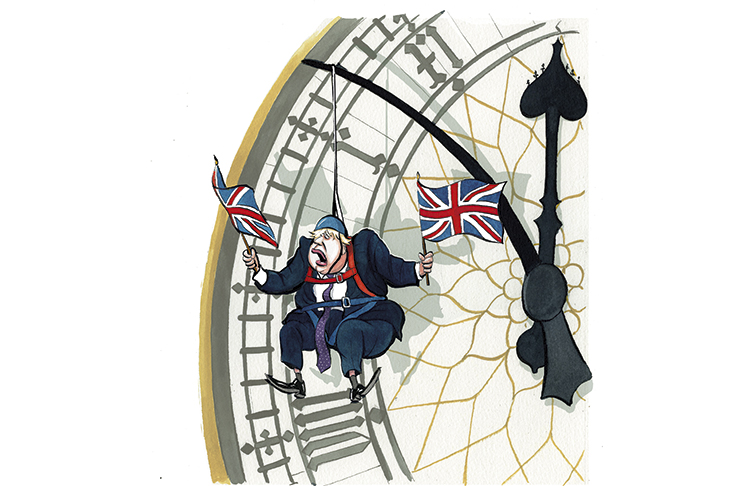This morning Britain’s Department for International Trade released its negotiating objectives for a UK-USA free trade agreement. The 184-page document explains in detail what the UK wants to get out of a trade deal with America.
The British government will try to angle the talks, which begin this month, towards securing a comprehensive arrangement — that is, a deal that covers a broad range of areas including digital, finance, tech, manufacturing and agriculture. If secured, it estimates this could translate into a $4.3 billion boost to the UK economy.
The UK government has put its ‘leveling up’ agenda at front and center of these trade talks, laying out how each region potentially stands to gain from securing a deal with the USA. Its own economic analysis estimates that it’s not London, but rather Scotland, the North East, and the Midlands that are positioned to gain most from removing barriers to trade:
| Northern Ireland | Growth is likely in key exports such as pharmaceuticals, machinery and furniture; greater ease of doing business through removing red tape and non-tariff barriers to trade |
| Scotland | Bolster existing trade in Scottish salmon and Scotch Whisky, while lowering tariffs on cashmere and clothing, and high quality meat |
| The Midlands | Reduce tariffs imposed on the region’s car manufacturers as well as its ceramics and drink exporters; services firms to benefit from increased market access in the US |
| North of England | Increased exports of machinery, road vehicles and manufactured products, exports of luxury clothing and access for lamb and dairy producers to the US market; innovative digital businesses could benefit from agreements on data flows and agreed copyright frameworks |
| Wales | Benefit and build upon its strong exports to the US, with potential to gain market access for lamb, reduced tariffs and export burdens on the automotive sector, as well as Welsh steel and ceramics |
| South West | Reduction of tariffs in key industries such as emerging technology, machinery, dairy and beef, as well as easing US customs procedures for ambitious SMEs exporting luxury sports equipment, marine equipment and beverages |
| East of England | Reduction of US tariffs on food and drink and an FTA will support high exports on medicinal products and in the life sciences industry more generally |
| London and the South East | Benefits for the region’s globally competitive professional business services, while agreements on digital trade and copyright frameworks will provide a boost for innovative UK tech firms |
While UK leaders remain adamant that they are willing to walk away from negotiations if the US demands too much, there’s plenty of optimism in DIT that Britain’s aims can be achieved in a relatively short period of time. Already the objectives have received a warm reception from the US ambassador to the UK. But there’s still plenty to unpack in the UK’s opening position. A few key takeaways below:
Agriculture in the UK could stand to gain from the deal
Despite a generally gloomy (and protectionist) narrative that tends to emphasize the UK agriculture sector’s vulnerability to free trade deals, today’s analysis suggests that Britain’s agriculture sector could actually fare well in a deal with the USA.
Better access to America’s beef markets and opening up the lamb market could make UK producers increasingly competitive overseas. The UK could fight for the implementation of geographical indicators, like ‘Welsh Lamb’, to be put in place in order to make British products even more recognizable. As well, equipment imported from the States for UK farming could be made substantially cheaper, improving the UK’s agriculture output overall.
Britain’s National Health Service is not on the table
This is made crystal clear in today’s objectives, and it is a running theme throughout the document. The Government has set out in the strongest terms that healthcare provisions are not to be sold into America’s private sector, and that any increased drug prices are to be ruled out as well.
‘When we are negotiating trade agreements, the NHS will not be on the table. The price the NHS pays for drugs will not be on the table. The services the NHS provides will not be on the table. The Government is fully committed to the guiding principles of the NHS — that it is universal and free at the point of need.’
Under World Trade Organization rules America already has access to the UK’s procurement markets, meaning it can bid for contracts made available to the private sector. The UK is looking to make it even easier for British business to access American markets and vice versa. So the ability for American companies to bid for NHS contracts is likely to continue as it does now, but even in this area the UK’s ability to ‘maintain existing protections for key public services’ is restated.
It’s all about mutual recognition
The NHS won’t be treated to American privatization but other areas, like chlorinated chicken, are still on the table. Rather than aiming for alignment on all food and service standards, the narrative created so far leans towards the two countries mutually recognizing each other’s standards as being high and of good quality.
For both food and product standards, it’s been noted that there are potential opportunities to reduce UK-US trade barriers by harmonizing standards/levels of protection and through mutual recognition — as long as UK standards are maintained and there is continued alignment with the EU.
Don’t wave goodbye to tariffs just yet
While the document makes clear the UK’s intention to liberalize trade and reduce both tariff and non-tariff barriers to trade, this deal certainly won’t be scrapping all taxes on imports. Unlike the government’s aim with the EU to secure tariff-free trade, a deal with the US would see ‘liberalization’, but not abolition, of tariffs. And the reduction of tariffs would be selective to mutually beneficial areas, which could see cheaper imports in some areas but continued protectionism in others.
While trade talks between the UK and EU grow increasingly tense, the UK will no doubt be looking to signal to the rest of the world that it’s open for business, and its Government would like to catch the biggest fish early on. America will certainly be delivering a robust response to these negotiating objectives, but if the response stays positive, we may end up watching a race between the EU and USA to reach the trade-deal-finish-line.


















